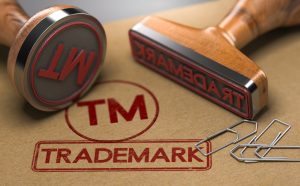Besides the thousands of considerations that can arise in M&A deals, intellectual property holds a key position and plays a very important role in the process. Here Rob Davey, Senior Director at CompuMark, a brand of Clarivate Analytics, explains to Lawyer Monthly why Trademarks are so important in the grand scheme of company buying.
All across the globe, consolidation has become an inevitable and unavoidable part of business in the 21st century. Whether it’s the proposal of a ‘megamerger’ within the media industry or a smaller-scale acquisition in a different sector, it’s something that we’re seeing more and more frequently with each passing day. According to a survey by Deloitte in which it spoke to 1,000 corporate executive and private equity investors, 750 of the respondents said that they think the number of mergers and acquisitions will increase in 2017 compared to last year, while 640 thought the size of these deals will also increase.
This boom in mergers and acquisitions has come about through a desire from organisations to achieve greater operational scale and increased efficiency all while bringing in more profit, and as the statistics above show, there’s no sign of this trend letting up any time soon.
Although the financial value of a company is always a crucial factor when it comes to the due diligence process of any merger and acquisition, the intellectual property it owns is equally as important, as this will account for a significant percentage of the overall value when merging companies are weighing up their assets. This is why there needs to be extreme care taken in identifying and properly assessing any and all intellectual property assets, including trademarks.
Trademarks are a hugely important asset for any business, especially in today’s highly competitive and brand-driven marketplace. They’re key to strengthening brand recognition and protecting against fraudulent and/or counterfeit operations, which is why they’re now heavily focused on during merger and acquisition due diligence processes — almost as much as patents, copyrights and other crucial intellectual property assets.
This process, known as ‘trademark validation’, is essential because a trademark only holds value if it has been properly registered and maintained. If companies choose to ignore trademark validation during the merger and acquisition process, it could lead to unforeseen revelations after the deal that could limit the scope of use.
For example, take the recent case of a major global car manufacturer, which outbid another company to purchase two luxury car manufacturers for almost a billion dollars. However, a twist in the acquisition meant that one of the luxury manufacturers was able to sell the rights to its trademark to the company that was outbid, meaning that although the purchasing company had manufacturing rights, it could not use the trademarked names. Eventually a deal was made to rectify the situation, but the purchasing company spent a lot more money than would’ve originally been necessary.
More often than not, the consequences of not carrying out a full trademark validation process can be more serious than those outlined in the case above. Depending on the circumstances, businesses can be faced with the threat of re-evaluating, re-pricing and re-structuring the merger or acquisition deal, and in some cases the deal might have to be abandoned entirely.
This is why a thorough trademark review and validation is vital for any business. Not only does it reduce the risk of surprise pay-outs or unexpected competition, but the process itself holds benefits for both parties.
For buyers, transparency around any trademark validation process allows them to gain all the information necessary to make an informed judgement on the validity and scope of the other party’s trademark assets — something that might also impact the overall value of the deal in question. It also allows the purchasing company to address strategic brand issues, such as which business-relevant categories the trademarks can be used in, which global markets they can be used in and when the registrations for those trademarks will expire. In other words, it allows the purchaser to gain a much more transparent understanding of the other company’s operations which can be of use going forward.
For companies that are selling, this process will ultimately help to achieve a smoother and more straightforward transaction. It could also help to provide clear details and information during the negotiation stages, as the seller will have a better idea of the value of all its assets.
There are several elements to the trademark validation process that must be considered if buyers and sellers are to fully reap the rewards. First, there’s the basic requirement of identifying all assets within the seller’s portfolio. They must declare ownership of all trademarks, and part of this step includes checking the chain of title to ensure each mark is filed in the correct owner’s name. It’s also important that each mark is thoroughly investigated — including determining the expiration dates and any pending applications — to ensure they are current.
The next step of proper trademark validation is to identify which jurisdiction each trademark is registered for, so that both parties can determine which jurisdictions are ‘first-to-use’ and which ones are ‘first-to-file’. Some countries may recognise common law trademark rights based on the use of a mark, while other jurisdictions give priority to the first party to file a trademark application, regardless of use.
The final part of the process — and one that’s particularly crucial to the successful running of any business — is to make sure that the goods and services classifications cover the buyer’s intended use. Domain names also need to be considered, as it’s important to know which names are owned by the seller and which are owned by external individuals, i.e. a licensee or other entity.
Trademarks are an important part of the merger and acquisition process, and can contribute to the overall value of a business. Trademark validation not only provides both sides of the deal with the necessary transparency to assess this value, but it also prevents the occurrence of any unexpected issues after the merger or acquisition has been completed.



















